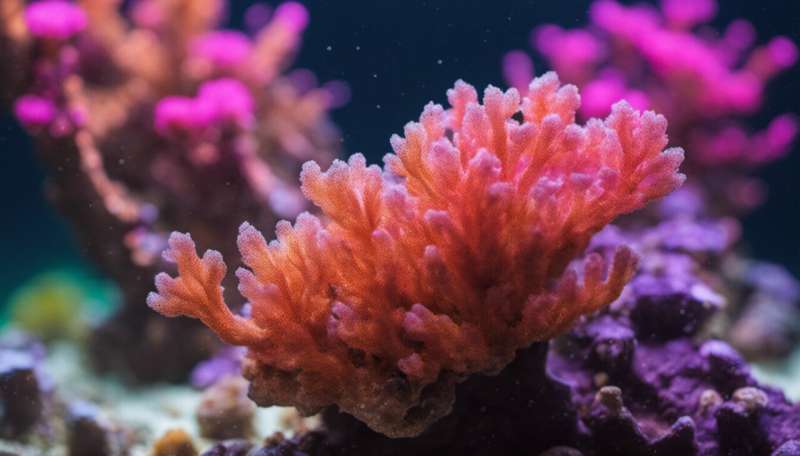Scientists discover that coral can record history

A Canadian study has discovered that coral is able to effectively record events in human history due to its ability to absorb the toxic metals released into the environment as a result of naval battles fought in their vicinity.
On 7 January 1841, the Second Battle of Chuenpee took place between the navies of the British Empire and China as part of the wider First Opium War. The war was fought between the two powers primarily over trade disagreements. During the battle, the British warship 'Nemesis' sunk a Chinese ship with a rocket. This sinking, alongside general artillery fire, would have resulted in the release of toxic mercury into the surrounding environment.
Now a team of scientists, led by Ruoyu Sun, a geochemist at Trent University in Peterborough, Canada, have found that corals in the South China Sea absorbed these metals, thus keeping a record of this, as well as future conflicts locked in their skeletons. Published in the journal Environmental Science and Technology, the findings provide a fascinating insight into how humans have been polluting the oceans throughout history.
The skeletons of hard corals are made of aragonite, a calcium carbonate mineral. As the coral grows, it absorbs additional calcium out of the water in order to build its skeleton. The result is that corals' annual growth bands can be used to track the history of the organism, much like the rings of a tree. However, coral has also been shown to absorb certain metal pollutants – such as lead and mercury – alongside calcium, and consequently allows scientists to track when these metals were present in the water.
The research team extracted a 200 year-old core from a Porites lutea coral in the South China Sea, expecting the record to match those gathered from remote ice and peat samples: a gradual increase over time due to mining, coal combustion and later industrial production from the nineteenth century onwards. However, the record they found was very different. In the oldest parts of the core, dating from between 1800 and 1830, levels of mercury were low and relatively constant. From 1830 to the beginning of the twenty-first century, the amount of mercury incorporated into the skeleton repeatedly spiked - sometimes reaching concentrations four to 12 times higher than the baseline.
By analysing these spikes further, the team were surprised to discover that they lined up precisely with a number of violent conflicts that took place in nearby China, specifically the First Opium War (1839-1842), Second Opium War (1856-1860) and the Second Sino-Japanese War/Second World War (1937-1945). The baseline also went up throughout the 1900s, probably due to increasing industrialisation, but was dwarfed by the wartime spikes.
But how did the mercury specifically end up being absorbed by the coral? The metal used in the production of weapons and explosives (as well as their detonation) could release mercury into the air. When the elemental form of mercury in the atmosphere encounters reactive chemicals, such as bromine ejected from the ocean via sea spray, it forms what researchers call 'reactive gaseous mercury' molecules. These then fall into the ocean, after which corals can absorb them into their skeletons.
However, there have been some reservations about the results – one large source of uncertainty is that although seeing a signal of wars in coral would not be impossible, Carl Lamborg, of the University of California, Santa Cruz, has argued that such a recording would require enormous inputs of mercury over time.
Moving forward, Sun and his team plans to look for more specific mercury isotopes in the coral archive. Different sources of mercury in the atmosphere, including from volcanoes, coal combustion, and explosives, contain different amounts of the element's isotopes, he argues. Liquid mercury derived from the mineral cinnabar, which was used as an additive in many explosives in the nineteenth century, might have its own such fingerprint. 'If that's the same as the one in the corals then we'll be sure,' Sun concludes.
Journal information: Environmental Science and Technology
Provided by CORDIS





















